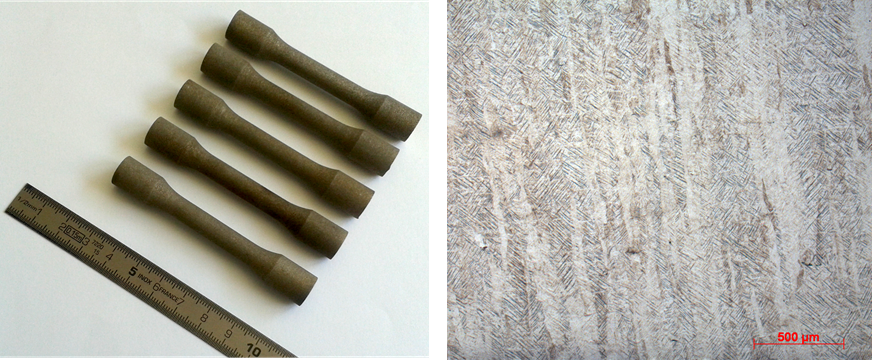Mechanical properties of metallurgical products fabricated by additive manufacturing
Ana Fernandez, Ludger Weber and Andreas Mortensen
The LMM contributes to the multipartner AMAZE Project, which is co-funded by the 7th Framework Programme of the European Commission and coordinated by the European Space Agency, in the field of additive manufacturing. Additive manufacturing technologies are a novel approach to the manufacture of net-shape or near-net parts, with applications in high-tech sectors such as aeronautics, space, nuclear fusion or automotive. AMAZE has the ambition to improve the quality of metallurgical products made by using layer-by-layer melt deposition of advanced alloys. The overall aim is to rapidly produce large defect-free additively-manufactured metallic components, including parts up to 2 meters in size, ideally with close to zero waste and suitable for industrial applications.
Our mission in the project is to undertake exploratory investigations in metallic components fabricated by different additive manufacturing processes. We explore the links between additive processing parameters, microstructural evolution and the final properties of these metallic AM parts. Particular focus is placed on the identification of defects that influence the mechanical performance of AM-produced metals and alloys.
Link: http://www.amaze-project.eu/
 (a) (b)
(a) (b)
Figure: (a) As-received tensile testing samples produced by Selective Laser Melting (SLM) produced by Renishaw plc; (b) Typical microstructure observed in samples fabricated by the SLM technique.